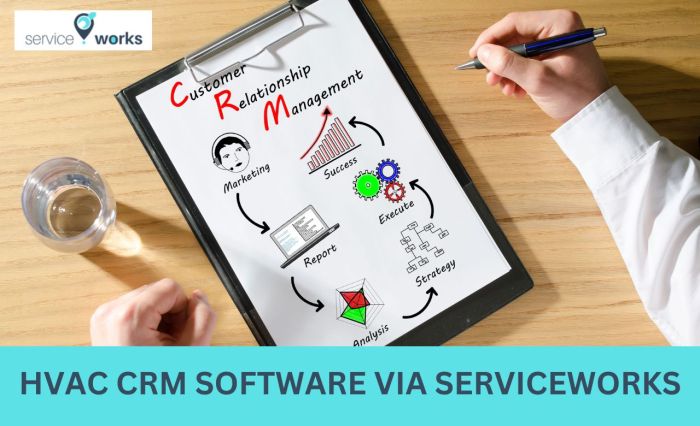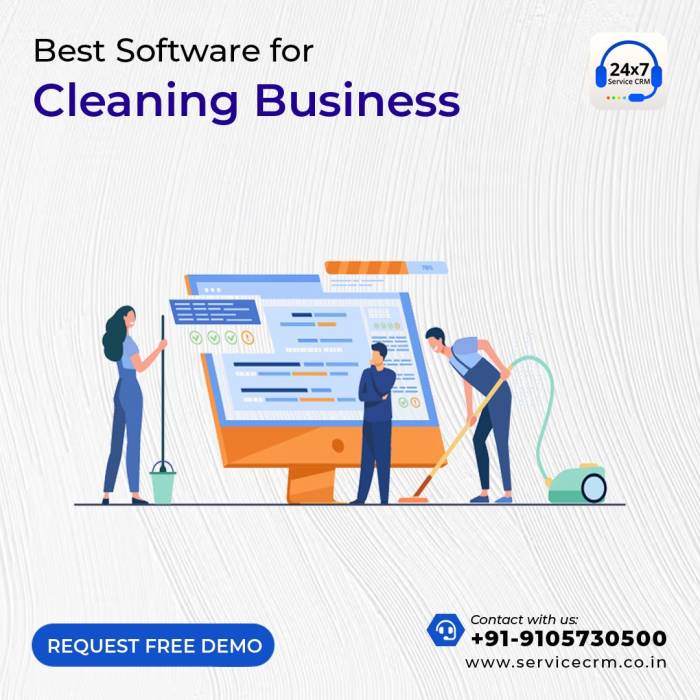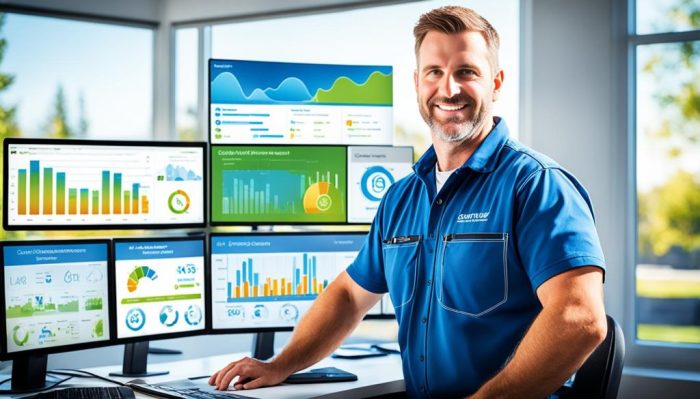Crm software for hvac companies – In today’s competitive HVAC landscape, efficiency and customer satisfaction are paramount. Managing leads, scheduling appointments, tracking service history, and nurturing customer relationships can quickly become overwhelming without the right tools. This is where a robust Customer Relationship Management (CRM) system steps in. Specifically designed for HVAC companies, a dedicated CRM streamlines operations, boosts productivity, and ultimately, enhances profitability.
This comprehensive guide explores the essential features, benefits, and considerations when choosing the perfect CRM software for your HVAC business.
Understanding the HVAC Industry’s Unique CRM Needs
HVAC businesses face unique challenges that require a specialized CRM solution. Unlike other industries, HVAC work often involves:
- On-site service calls: Accurate scheduling, dispatching, and tracking technician location are crucial.
- Complex equipment management: Maintaining detailed records of installed systems, maintenance schedules, and warranty information is essential.
- Seasonal fluctuations in demand: The ability to manage high volumes of leads during peak seasons and effectively plan for slower periods is vital.
- Recurring maintenance contracts: Efficiently managing contracts, renewals, and billing is key to revenue stability.
- High customer expectations: Providing prompt, professional service and excellent communication is crucial for customer retention.
A CRM tailored to the HVAC industry addresses these specific needs, providing features that simplify complex workflows and improve operational efficiency.
Key Features of HVAC-Specific CRM Software
The best CRM software for your HVAC company will include a range of features designed to improve various aspects of your business. These features typically include:
Lead Management and Sales Automation
- Lead capture and qualification: Integrating with various sources (website forms, phone calls, email marketing) to capture leads and automatically qualify them based on predefined criteria.
- Automated lead routing: Automatically assigning leads to the appropriate technicians or sales representatives based on location, expertise, and availability.
- Sales pipeline management: Tracking the progress of leads through the sales funnel, identifying bottlenecks, and improving conversion rates.
- Sales reporting and analytics: Gaining insights into sales performance, identifying top-performing sales representatives, and tracking key metrics like conversion rates and average deal size.
Scheduling and Dispatching
- Appointment scheduling: Creating and managing appointments with customers, considering technician availability, travel time, and service duration.
- Real-time dispatching: Optimizing technician routes and schedules to minimize travel time and maximize efficiency.
- GPS tracking: Monitoring technician location in real-time to ensure timely arrivals and improve customer communication.
- Automated reminders and notifications: Sending automated reminders to customers about upcoming appointments and notifications to technicians about their schedules.
Customer Relationship Management, Crm software for hvac companies
- Customer database: Maintaining a centralized database of customer information, including contact details, service history, and equipment details.
- Communication tools: Facilitating communication with customers through email, SMS, and phone calls, all within the CRM system.
- Customer segmentation: Grouping customers based on various criteria (e.g., service frequency, equipment type) for targeted marketing and communication.
- Customer satisfaction surveys: Gathering customer feedback to identify areas for improvement and enhance customer loyalty.
Equipment and Maintenance Management
- Equipment tracking: Maintaining a detailed inventory of installed equipment, including make, model, serial number, and installation date.
- Maintenance scheduling: Scheduling routine maintenance appointments based on equipment type, manufacturer recommendations, and customer preferences.
- Warranty management: Tracking warranty information for installed equipment and managing warranty claims.
- Service history tracking: Maintaining a detailed record of all service calls, repairs, and maintenance performed on each piece of equipment.
Reporting and Analytics
- Sales reports: Tracking sales revenue, conversion rates, and average deal size.
- Service reports: Monitoring service call volume, technician performance, and average service time.
- Customer satisfaction reports: Tracking customer feedback and identifying areas for improvement.
- Financial reports: Generating reports on revenue, expenses, and profitability.
Benefits of Implementing an HVAC CRM
Implementing a CRM system offers numerous benefits for HVAC companies, including:
- Improved customer satisfaction: Faster response times, better communication, and personalized service lead to happier customers.
- Increased efficiency: Streamlined workflows, automated tasks, and optimized scheduling improve overall efficiency.
- Enhanced sales performance: Better lead management, automated sales processes, and improved customer relationships boost sales.
- Reduced operational costs: Improved efficiency, reduced administrative overhead, and better resource allocation lower costs.
- Better data-driven decision making: Access to real-time data and comprehensive reports enables informed business decisions.
- Improved team collaboration: Centralized access to information facilitates better communication and collaboration among team members.
Choosing the Right HVAC CRM Software
Selecting the right CRM software requires careful consideration of your specific needs and budget. Factors to consider include:
- Scalability: Ensure the CRM can handle your current workload and accommodate future growth.
- Integration capabilities: Check for integration with other software you use, such as accounting software, scheduling tools, and marketing automation platforms.
- User-friendliness: Choose a CRM that is easy to use and navigate for all team members.
- Mobile accessibility: Ensure the CRM is accessible on mobile devices for technicians and sales representatives on the go.
- Customer support: Choose a provider that offers reliable customer support and training.
- Pricing and features: Compare pricing plans and features to find the best value for your money.
Frequently Asked Questions (FAQ)
- Q: How much does HVAC CRM software cost? A: The cost varies widely depending on the features, number of users, and provider. Expect to pay anywhere from a few hundred dollars per month to several thousand dollars per year.
- Q: Can I integrate my existing software with a new CRM? A: Many CRMs offer integration with popular accounting, scheduling, and marketing software. Check the provider’s website for details on integrations.
- Q: How long does it take to implement a CRM? A: Implementation time varies depending on the size of your company and the complexity of the CRM. Expect to allocate several weeks or months for setup and training.
- Q: What are the key metrics to track in an HVAC CRM? A: Key metrics include sales conversion rates, average service time, customer satisfaction scores, and technician efficiency.
- Q: What if my technicians aren’t tech-savvy? A: Most CRM providers offer training and support to help your team learn how to use the software effectively.
Conclusion: Crm Software For Hvac Companies
Investing in the right CRM software is a strategic move for any HVAC company looking to improve efficiency, enhance customer relationships, and drive profitability. By carefully considering your specific needs and choosing a system with the right features, you can transform your business operations and gain a competitive edge in the market. Start exploring different options today and discover how a dedicated HVAC CRM can revolutionize your business.
References
While specific CRM software recommendations are avoided to remain unbiased, general information on CRM software and its benefits can be found on sites like:
Remember to research individual CRM vendors to find the best fit for your business needs and budget.

Source: service.works
Call to Action
Ready to streamline your HVAC operations and boost your bottom line? Contact us today for a free consultation to discuss your specific CRM needs and explore the best solutions for your business.
Frequently Asked Questions
What are the key features to look for in HVAC-specific CRM software?
Essential features include job scheduling, service history tracking, inventory management, customer communication tools (email, SMS), reporting and analytics dashboards, and ideally, integration with other business systems.
How much does HVAC CRM software typically cost?
Pricing varies greatly depending on the features, number of users, and vendor. Expect to find options ranging from affordable monthly subscriptions to more comprehensive enterprise solutions with higher costs.
How long does it take to implement a CRM system?

Source: medium.com
Implementation time depends on the complexity of the system and the size of the company. Smaller businesses might see results within weeks, while larger organizations may require several months.
Can CRM software integrate with my existing accounting software?
Many CRM systems offer integration capabilities with popular accounting software. Check with your chosen vendor to ensure compatibility with your current setup.

Source: hvacsoftwarefaqs.com
What kind of training is required for my employees?
Most vendors provide training resources, including online tutorials, documentation, and potentially in-person or virtual training sessions. The level of training needed will depend on the complexity of the software and your team’s technical skills.
